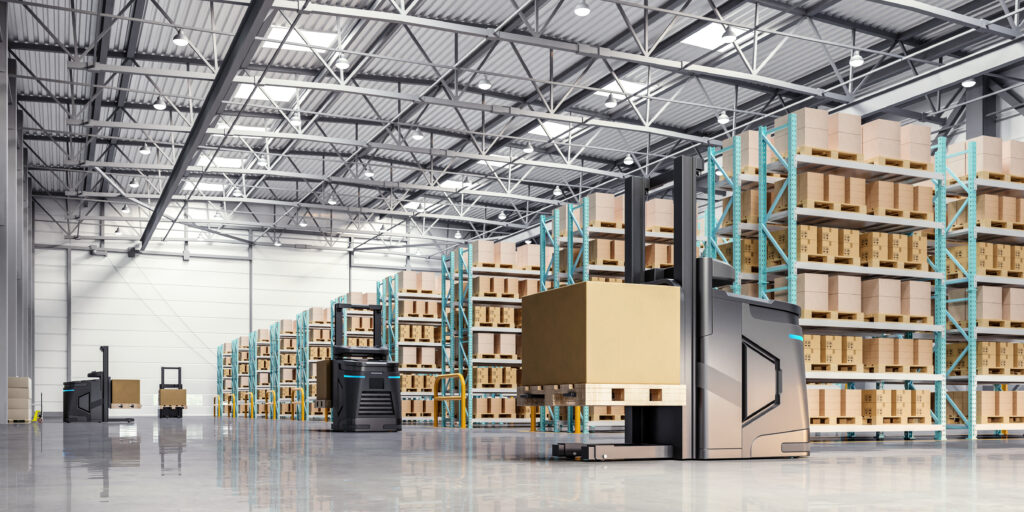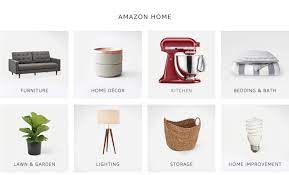
If you’re into e-commerce, you can’t help but wonder how Amazon has grown from starting in a family garage in 1995 into the multi-billion dollar company it is now.
They have a traffic rank of number 6 in the US, number 21 in the world, and number 12 in the online services category.

Amazon currently has a 37.8% share of the US Ecommerce market and is the biggest e-commerce retailer in the world right now.
Beyond e-commerce, it has grown to compete and even dominate in other industries, having a market capitalization of $1.43trillion
In this post, I’ll attempt to briefly glance into the strategies behind the company’s success, and why it has proven to be resilient, despite the much skepticism people had about it when it started.
Hopefully, you’ll learn some lessons from this post to grow your own e-commerce business too without having to suffer a considerable loss due to high competition.

Jeffrey Preston Bezos founded Amazon on July 5th, 1994 registered it as “Cadabra. inc” in Washinton but later changed it to Amazon after one of his lawyers mistakenly called it “Cadaver”. Jeff Bezos had to do a search in the dictionary for a great and memorable brand name
The company began its operation on July 16th, 1995 as the “world’s largest online bookseller” and by 1998, it added music and video sales to its inventory and continued expanding thereafter.
Within 2 months of operation, Amazon had sold to all 50 states in the USA and over 45 countries and was earning up to $20,000 per week.
By December 1996, Amazon already had 150,000 customer accounts and grew to 1,000,000 customer accounts by October 1997. Its revenue also grew from $15.7m in 1996 to $148m in 1997 and $610m in 1998.
The company however didn’t register its first quarterly profit until the last quarter of 2001 after which it registered its first yearly profit in the year 2003. It grew onward to become a leader in the retail and online services industry.
Jeff Bezos stepped down from being the CEO on July 5th, 2021, and became the Executive Chairman of the company’s board.
Driving the culture of creating the best customer experience within the DNA of Amazon was Jeff Bezos’s plan since the company’s inception.
Jeff Bezos positioned Amazon to be the “Earth’s most customer-centric company” since its inception and this has been the driving force for its success and innovations.
I will attempt to divide Jeff Bezos’ obsession with customer experience into two major broad steps:
In choosing what Amazon will start out selling, Jeff Bezos had a list of about 20 products he could sell on its website and then narrowed it down to 5 promising products. They include compact disks, books, computer hardware, computer software, and videos.
Jeff opted to sell books on his online store having considered its low unit price, the worldwide demand for literature, and its wide selection of titles.
He made a choice considering customer demand, and what he can readily supply at a low unit price, rather than guessing what he is passionate to sell.
Making every plan with the customer at the center of your business is the secret to how Amazon has grown from its inception to what it is now.
Amazon’s 6 customer service tenets and its leadership principles are known to and imbibed by all employees inform why the company keeps evolving and meeting even the unspoken demands of the customers.
It is a fact that 90% of the innovations done in Amazon resulted from customer feedback and obsession to satisfy their customers’ expectations.
The remaining 10% is taking the obsession to another level by striving to anticipate the unspoken needs of the customers that they might not even know about and fulfill them.
Even though many critics of Amazon expect it to fail since it was not achieving profitability fast enough until 2003, the company proved otherwise.
Jeff Bezos knew that the Internet would remain for a long time and that to remain in business, his company would have to get big fast enough, acquiring and keeping customers and the right technology needed to grow.
“Get Big Fast” was the mantra and Bezos was going to do all he could to get big fast, reinvesting revenue back into technology and marketing to enable it to increase its inventory category and create other innovative products that help retain customers.
For a 1-on-1 consultation call for help creating your Shopify website and for your e-commerce marketing, click this link.
Here are some Systematic Approach To Amazon Getting Big Fast

To the players in Amazon, acquiring more and more customers, satisfying their expectations, and keeping them with several innovations. are what they require to get big fast
Here is how Amazon strives to know its customers and exceed their expectations:
Growing your business depends on how well you can use your resources to satisfy your customers. keep them, get more customers, and thereby grow your revenue rapidly.
Keeping with its mantra to “Get Big Fast”, Amazon began diversifying in 1998, adding music, CDs, and DVDs to its inventory as it grew.
By the year 2000, Amazon launched its marketplace, allowing third-party sellers to sell on Amazon in exchange for a percentage of their sales.
Imagine how efficient this was, allowing Amazon to:
Gathering such data keep Amazon on its toes about what customers want and how to satisfy them.
It’s not enough to get your business to function well, you should also increase the speed at which it is functioning well.
As Amazon began to experience hypergrowth, there came a need to build internal systems to allow third-party retailers to have Amazon features.
This effort, combined with the realization of the slow pace of its software engineering at the time, led to the initial formation of Amazon Web Services in July 2022 which was later launched in 2006 as a cloud computing service.
AWS has not only allowed Amazon to grow and add features, but it has also become the most profitable division of the company.
From merely a side project that aimed at the productivity of the amazon.com brand, the company has actually “Gotten Big Fast” with AWS all the while learning what the customers (third-party retailers and software developers) want
As an e-commerce business owner, you should always make your website more convenient for your customers to use and maybe you can find better ways to serve them too as Amazon did.
Jeff Bezos apparently must have known from history that getting big fast and remaining relevant can only be attained by studying customer behavior and trend and innovating fast enough to satisfy those trends.
Companies like BlackBerry, Blockbuster, and Kodak failed because they didn’t adapt and innovate along with changing customer behavior and competition.
But Amazon very well learned customer behavior and trend to begin innovations like Prime Video streaming and Amazon Prime to keep their customers rather than lose them to others.
Amazon very well anticipates customer behavior and innovates accordingly to keep satisfying and keeping their customers.
Amazon shows its willingness to make its customer the center of everything it does by making all the efforts to make every customer special, attending to their concerns and feedback.
By learning what customers want and don’t want by giving feedback through surveys, buying feedback, reviews, ratings, etc Amazon can understand how to satisfy their customers better, thereby keeping the customers.

When everyone was skeptical about the success of Amazon, Jeff Bezos understands that the internet is a hub of opportunity and that Amazon only needs to get big fast to succeed.
Hence why his business plan didn’t forecast profit for Amazon till 5 years after its launch, which even increases the skepticism of its critics.
However, the learning approach of the company to understand and be obsessed with the customer affords it the advantage of gathering data and using it to make innovations for its customer to help them in its three core aspects which are price, selection, and convenience.
To keep its prices competitively low for the long term, here are the data-driven innovations carried out by Amazon to Get Big Fast widening its selections and enabling more convenience in purchasing its products.

Amazon launched 2 years after the world wide web came into the public domain, giving it exposure among the early adopters of the Internet.
Jeff Bezos’s strategy of focusing on selling books which had a wide selection and colossal demand gave him an edge to quickly establish Amazon as the “world’s largest bookstore” having more than 1 million titles the same year it opened for business.
Having almost zero competition online, and a high demand for literature, selling to the early adopters of the world wide web ensured Amazon had massive sales within its first year without having to run any form of advertising.
Its major advertisement within its first year came primarily via word of mouth and articles by journalists about the then-new company.
By 1996, Amazon began its Amazon Associates program which helped drive more traffic to the website in exchange for commissions to the website owners.
Amazon started running Television campaigns in 1999 till 2001 from which it gathered that the data didn’t reveal much increase in sales from the expensive ads.
Bezos then decided to continue its focus on the company’s value which is offering high-quality customer experience, low prices, personalized product recommendations, and free shipping on orders from $25 which ultimately drove a high volume of sales.
In Jeff Bezos’s words, “We think we get a better return giving the money to customers instead of television networks”
In this competitive age, however, advertising an online business regardless of customer satisfaction and promotional discounts is not a luxury but a necessity if the business must keep dominating the market.
The company right now is currently the highest spender on Google ads, spending about $20.7m per month, and spent around $235.2m in Facebook, Instagram, and Twitter ads in 2020.

Amazon Associates, the affiliate marketing program of Amazon began with one person in 1996, and by 1999, it had more than 350,000 Amazon associates.
The Amazon Associates program popularized the concept of affiliate marketing even though other websites already started their affiliate program before Amazon even existed.
This innovation nevertheless contributed to Amazon’s increase in sales and popularity worldwide
Amazon currently has over 900,000 affiliates worldwide.

Beginning in 1998, Amazon started diversifying when it had competitors entering the world of online bookstores.
Selling music and DVDs initially in 1998, it later ventured into other categories such as consumer electronics, video games, software, home improvement items, etc in 1999.
Its experience as a credible bookseller gave it leverage to also compete with established brands in these other categories and offered its customers a wider range of selection of what they could get on their doorstep.
This helped increase more time spent on Amazon and its customers remained ever more loyal as indicated by its ever-growing yearly revenue that had to be reinvested back into the business.

The 1-Click Checkout technology, which was patented in 1999, creates a design by Amazon on amazon.com that allows users of the site to click the BUY button and make purchases using previously stored details on the site.
This technology made it easier for Amazon customers to make repeated purchases without going through the stress of inputting their information on the site the second time.
Again, going by the mantra of Jeff Bezos about creating a great customer experience for his customers, it is not surprising to have this productivity technology that makes shopping even more convenient for his customers.

Amazon launched its marketplace in November 2000 to allow third-party sellers to sell on Amazon and pay Amazon a commission on sales.
This created a network effect, giving Amazon customers the largest selection to choose from without Amazon having to hold all the inventory itself, making it truly the “Everything Store”.
Amazon Marketplace currently has approximately a 310million users in the world with 80% of them in the United States
It is now estimated that more than 2 million active sellers are using Amazon Marketplace to sell their products out of which 1.1 million are in the United States
This wide selection of products enabled by the Amazon Marketplace has positioned Amazon as the most visited online marketplace in the US.

As an offshoot of trying to incorporate internal systems that will allow certain features for third-party retailers, Amazon Web Service was creatively created in July 2002 and evolved until it launched its cloud computing service in March 2006
The Amazon Web Service currently accounts for the majority of Amazon’s profit, holding about 41.5% of the cloud computing market as the leading force in the industry.
While the AWS initially was meant to serve Amazon internally increasing productivity, it has proven to be the most profitable innovation of Jeff Bezos

Amazon launched its Prime subscription in February 2005 as an exclusive membership to Amazon’s customers who wished to receive their delivery speedily within 2 days.
At a subscription price of just $79 per year., it offered 2-day free shipping on over 1 million in-stock items
Amazon Prime has gone on to increase its benefits to include Amazon Prime video streaming, Prime music, books and magazines, free shipping, exclusive deals, etc.
Amazon Prime has proven to be a great move by Jeff Bezon as it has led to a significant increase in purchases by customers who want to use as many free shipping opportunities as possible (instead of $9.48 for every 2-day delivery) within the year.
About 200 million people have subscribed to Amazon Prime across 23 different countries with 74% of them in the US.

Amazon launched its Kindle e-reader launched on November 2007. It’s a device that Amazon made to help its customers read ebooks.
The device got sold out in less than 6 hours, was widely adopted by Amazon users, and led to a significant increase in the sales of ebooks.
Amazon Kindle recently hosts about 72% of the e-reader marketing and has sold between 20 million and 90 million Kindle e-readers.
With the advent of Amazon Kindle, Amazon was able to sell more e-books than physical books for the first time in the year 2011.

According to Amazon, more than 520,000 robots have been deployed to various facilities where they help with the automated processing of the orders purchased by customers.
This helps in speeding up the time required by Amazon to deliver orders, thereby making it more convenient for its customers.
Amazon started using automation since the year 2012 and the efficiency of the robots has been great.
While everyone doubted the profitability of Amazon and predicted it was going to fail like other companies that later went bankrupt, Jeff Bezos’s leadership in creating a customer obsession culture and the mantra “Get Big Fast” have been responsible for the large-scale growth of the company.
If you want to grow your own eCommerce business even in this competitive age, the same applies to you.
Rather than starting out selling everything your competitor is selling, you should focus on an under-served market and serve that market well just like Amazon served the book market well.
You will require your experience in dominating this market to compete in other markets and take a share of the market without having your competitors swallow up your business.
Also, instead of spending your revenue on frivolities, you should aim at re-investing it back into the business and grow the business rapidly until it can function and compete with others in the general market.
Your first goal is to make sales fast by creating effective marketing campaigns for your products, serving your customers with great customer experience, and considering your price, selection, and the convenience of purchasing products on your website.
And the convenience will come via the speed of delivery to their doorstep and the technology used in making your website features better and easy to navigate.
You have learned what it takes to grow a multi-billion dollar e-commerce business. To learn how to increase sales on your Shopify website, click here.
For a 1-on-1 consultation call for help creating your Shopify website and for your e-commerce marketing, click this link.
Tags: amazon, ecommerce, sales growth